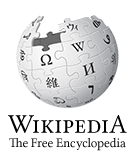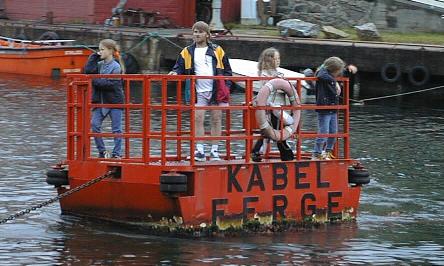User:Dod1/sandbox
image:20ency1.1.jpg Pic. of User:Larry Sanger, one of the founders of Wikipedia.
Copied from User:Maveric149
- If you can't edit or don't want to post your question/comment in a public forum, then email me (you have to be logged-in and have a valid email address set-up to use this feature).
- Current UTC time is 19:19
- Advanced Google Search
- encyclopedia meta-search engine
- Rambot RC
- Current wikipedia STATUS (as of Friday January 10, 2025): Still here.
Q----- Wikipedia is a WikiWiki, meaning that anybody can easily edit any article and have those changes posted immediately. This page is the reference for Wiki markup. You might also want to learn about:
- how to start a page
- informal tips on contributing to Wikipedia
- editing tasks in general at the Wikipedia:Editing FAQ
- layout conventions, at the Wikipedia:Manual of Style
- Wikipedia:Naming conventions for articles themselves
- ... and finally, the full kaboodle of utilities for editors.
It's very easy to edit a Wiki page. Simply click on the "Edit this page" link at the left (also on the bottom and top) of a Wiki page to change the page itself, or click on "Discuss this page" link and then on "Edit this page" to write on the corresponding talk page. This will bring you to a page with a text box containing the editable text of that Wiki page.
Then type away, write a short edit summary on the small field below the edit-box and when finished press "Save"! You can also preview your changes before saving if you like.
Depending on your system, pressing Enter while the edit box is not active (there is no typing cursor in it) may have the same effect as pressing Save.
It is often more convenient to copy and paste the text first into your favorite text editor, edit and spell check there, and then paste back into the browser to preview. This way, you can also keep a local backup copy of the pages you authored so that you can make changes offline.
The wiki markup
[edit]In the left column of the table below, you can see what effects are possible. In the right column, you can see how those effects were achieved. In other words, to make text look like it looks in the left column, type it in the format you see in the right column.
You may want to keep this page open in a separate browser window for reference. If you want to try out things without danger of doing any harm, you can do so in the Sandbox.
Sections, Paragraphs, Lists and Lines
[edit]| What it looks like | What you type |
|---|---|
|
Start your sections with header lines: New Section[edit]Subsection[edit]Sub-subsection[edit] |
== New Section == === Subsection === ==== Sub-subsection ==== |
|
A single newline has no effect on the layout. These can be used to separate sentences within a paragraph. This aids editing and improves the diff function.
But an empty line starts a new paragraph. |
A single newline has no effect on the layout. These can be used to separate sentences within a paragraph. This aids editing and improves the ''diff'' function. But an empty line starts a new paragraph. |
| You can break lines without starting a new paragraph. |
You can break lines<br> without starting a new paragraph. |
|
* Lists are easy to do: ** start every line with a star ** more stars means deeper levels |
|
# Numbered lists are also good ## Very organized ## easy to follow |
|
* You can even do mixed lists *# and nest them *#* like this |
|
; Definition list : list of definitions ; item : the item's definition |
|
:Lines can be ::indented :::several levels |
A manual newline starts a new paragraph. |
:A colon will indent a line or paragraph. A manual newline starts a new paragraph. |
IF a line starts with a space THEN
it will be formatted exactly
as typed;
in a technical looking font;
lines won't wrap;
ENDIF
this is useful for:
* pasting preformatted text;
* algorithm descriptions;
* ascii art;
WARNING If you make it wide, you force the whole page to be wide and hence less readable. Never start ordinary lines with spaces.
|
IF a line starts with a space THEN
it will be formatted exactly
as typed;
in a technical looking font;
lines won't wrap;
ENDIF
this is useful for:
* pasting preformatted text;
* algorithm descriptions;
* ascii art; |
<center>Centered text.</center> |
|
| A horizontal dividing line: above
and below. |
A horizontal dividing line: above ---- and below. |
Links, URLs, Images
[edit]| What it looks like | What you type |
|---|---|
London has good public transport.
Thus the link above is to http://www.wikipedia.org/wiki/Public_transport, which is the article with the name "Public transport". |
London has good [[public transport]]. |
| Same target, different name: answers. | Same target, different name: [[wikipedia FAQ|answers]] |
| Endings are blended into the link: testing, genes |
Endings are blended into the link: [[test]]ing, [[gene]]s |
|
Automatically hide stuff in parentheses: kingdom. Automatically hide namespace: Village Pump. The server fills in the part after the | when you save the page. |
Automatically hide stuff in parentheses: [[kingdom (biology)|]].
Automatically hide namespace: [[Wikipedia:Village Pump|]]. |
| When adding a comment to a Talk page, you should sign it. You can do this by adding three tildes for your user name: - Montrealais
or four for user name plus date/time: |
When adding a comment to a Talk page, you should sign it. You can do this by adding three tildes for your user name: ~~~ or four for user name plus date/time: ~~~~ |
| The weather in London is a page that doesn't
exist yet.
|
[[The weather in London]] is a page that doesn't exist yet. |
|
Redirect one article title to another by putting text like this in its first line. Note that there must be no text following this, or the redirect may not work. See Wikipedia:redirect for more. |
#REDIRECT [[United States]] |
|
For a special way to link to the article on the same subject in another language, see Wikipedia:Interlanguage links. |
|
| External link: Nupedia | External link: [http://www.nupedia.com Nupedia] |
| Or just give the URL: http://www.nupedia.com. | Or just give the URL: http://www.nupedia.com.
|
A picture: 
|
A picture: [[Image:Wiki.png]] or, with alternate text (preferred) [[Image:Wiki.png|Wikipedia logo]] which will be
|
|
Clicking on an uploaded image displays a description page, which you can also link directly to: Image:Wiki.png |
[[:Image:Wiki.png]] |
|
To include links to non-image uploads such as sounds, or to images shown as links instead of drawn on the page, use a "media" link. |
[[media:Classical guitar scale.ogg|Sound]] [[media:Tornado aircraft.jpg|Link to image]] |
|
To link to books, you can use Wikipedia:ISBN links. ISBN 0123456789X |
ISBN 0123456789X |
Character formatting
[edit]| What it looks like | What you type |
|---|---|
|
Emphasize, strongly, very strongly.
|
''Emphasize'', '''strongly''', '''''very strongly'''''. |
|
You can also write italic and bold if the desired effect is a specific font style rather than emphasis, as in mathematical formulas:
|
You can also write <i>italic</i> and <b>bold</b> if the desired effect is a specific font style rather than emphasis, as in mathematical formulas: :<b>F</b> = <i>m</i><b>a</b> |
| A typewriter font for technical terms. | A typewriter font for <tt>technical terms</tt>. |
| You can use small text for captions. | You can use <small>small text</small> for captions. |
| You can and underline new material. |
You can <strike>strike out deleted material</strike> and <u>underline new material</u>. |
|
Umlauts and accents: (See wikipedia:Special characters) |
À Á Â Ã Ä Å Æ Ç È É Ê Ë Ì Í Î Ï Ñ Ò Ó Ô Õ Ö Ø Ù Ú Û Ü ß à á â ã ä å æ ç è é ê ë ì í î ï ñ ò ó ô œ õ ö ø ù ú û ü ÿ |
|
Punctuation: |
¿ ¡ « » § ¶ † ‡ • — |
|
Commercial symbols: |
™ © ® ¢ € ¥ £ ¤ |
| Subscript: x2 Superscript: x2 or x²
ε0 = 8.85 × 10−12 C² / J m. |
Subscript: x<sub>2</sub> Superscript: x<sup>2</sup> or x² ε<sub>0</sub> = 8.85 × 10<sup>−12</sup> C² / J m. |
| Greek characters: α β γ δ ε ζ |
α β γ δ ε ζ η θ ι κ λ μ ν ξ ο π ρ σ ς τ υ φ χ ψ ω Γ Δ Θ Λ Ξ Π Σ Φ Ψ Ω |
|
Math characters: |
∫ ∑ ∏ √ − ± ∞ ≈ ∝ ≡ ≠ ≤ ≥ → × · ÷ ∂ ′ ″ ∇ ‰ ° ∴ ℵ ø ∈ ∉ ∩ ∪ ⊂ ⊃ ⊆ ⊇ ¬ ∧ ∨ ∃ ∀ ⇒ ⇔ → ↔ |
x2 ≥ 0 true.
|
<i>x</i><sup>2</sup> ≥ 0 true. |
|
Complicated formulae: |
<math>\sum_{n=0}^\infty \frac{x^n}{n!}</math>
|
|
Suppressing interpretation of markup:
|
<nowiki>Link → (<i>to</i>) the [[Wikipedia FAQ]]</nowiki> |
Tables
[edit]| First header | Second header | Third header |
|---|---|---|
| upper left | upper middle | right side |
| lower left | lower middle | |
| bottom row | ||
<table border="1"> <caption>An example table</caption> <tr> <th>First header</th> <th>Second header</th> <th>Third header</th> </tr> <tr> <td>upper left</td> <td>upper middle</td> <td rowspan=2>right side</td> </tr> <tr> <td>lower left</td> <td>lower middle</td> </tr> <tr> <td colspan="3" align="center">bottom row</td> </tr> </table>
If your table doesn't look right, make sure that all <tr> and <td> tags are closed with corresponding </tr> and </td> tags. Do not indent lines, and do not include empty lines within a table. Otherwise, you will get spurious space above the table or even a browser crash.
Here's a more advanced example, showing some more options available for making up tables. You can play with these settings in your own table to see what effect they have. Keep in mind that though colors are possible, it's best to use them sparingly. You can't use the <thead>, <tfoot> and <tbody> elements. Check the above tables to see what can be done to the text inside the cells.
| First header | Second header | |||||
|---|---|---|---|---|---|---|
| upper left | right side | |||||
| lower left | lower middle | |||||
|
||||||
<table border="1" cellpadding="5" cellspacing="0" align="center"> <caption>'''An example table'''</caption> <tr> <th style="background:#efefef;">First header</th> <th colspan="2" style="background:#ffdead;">Second header</th> </tr> <tr> <td>upper left</td> <td> </td> <td rowspan=2 style="border-bottom:3px solid grey;" valign="top"> right side</td> </tr> <tr> <td style="border-bottom:3px solid grey;">lower left</td> <td style="border-bottom:3px solid grey;">lower middle</td> </tr> <tr> <td colspan="3" align="center"> <table border="0"> <caption>''A table in a table''</caption> <tr> <td align="center" width="150px">[[Image:wiki.png]]</td> <td align="center" width="150px">[[Image:wiki.png]]</td> </tr> <tr> <td align="center" colspan="2" style="border-top:1px solid red; border-right:1px solid red; border-bottom:2px solid red; border-left:1px solid red;"> Two Wikipedia logos</td> </tr> </table> </td> </tr> </table>


